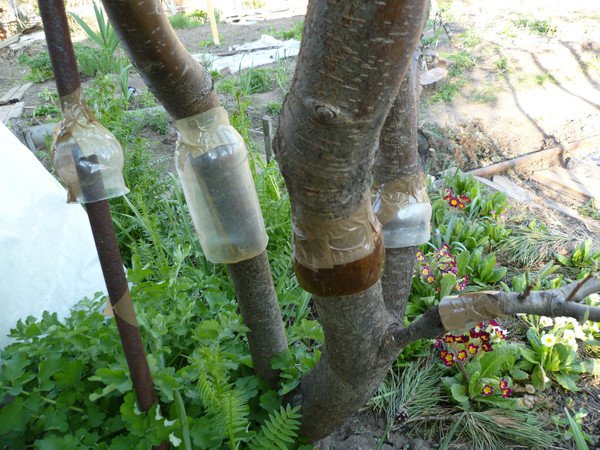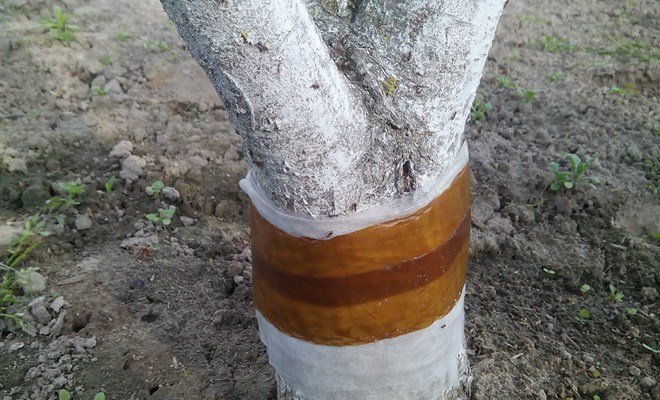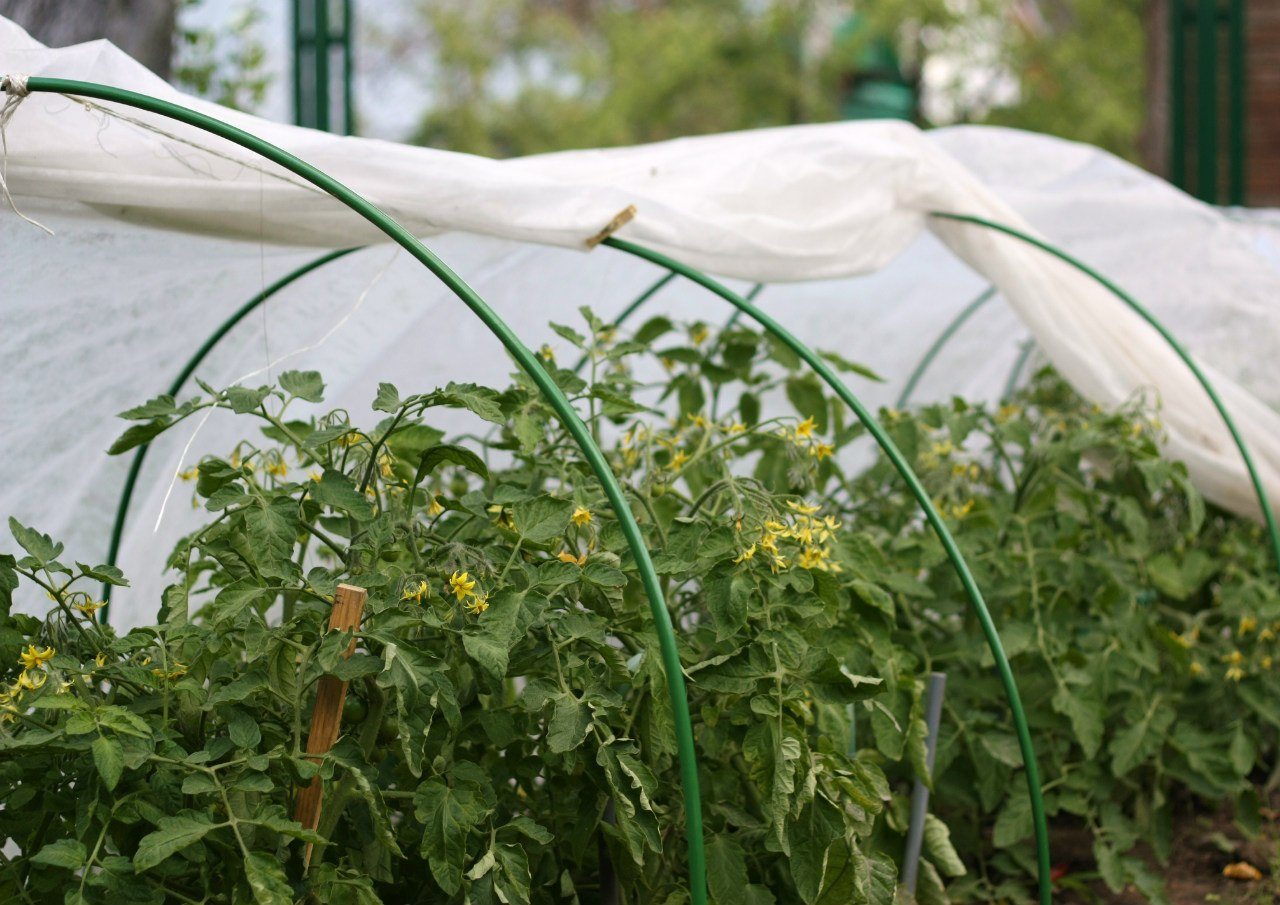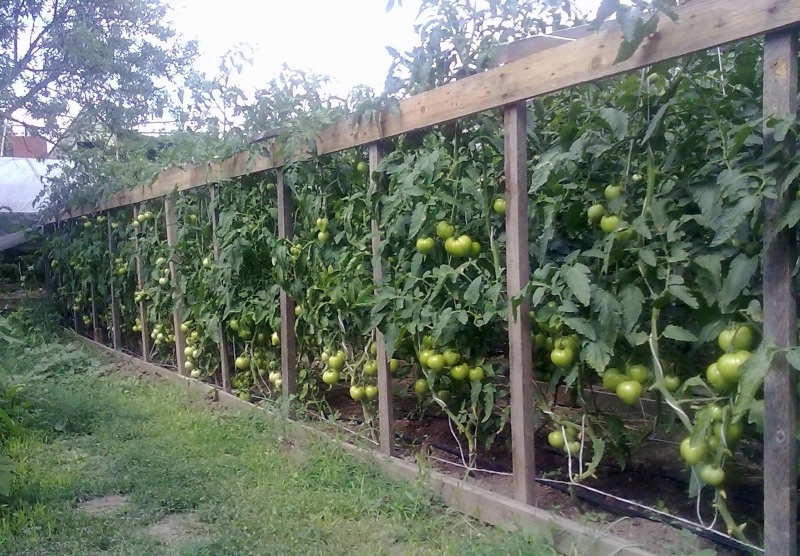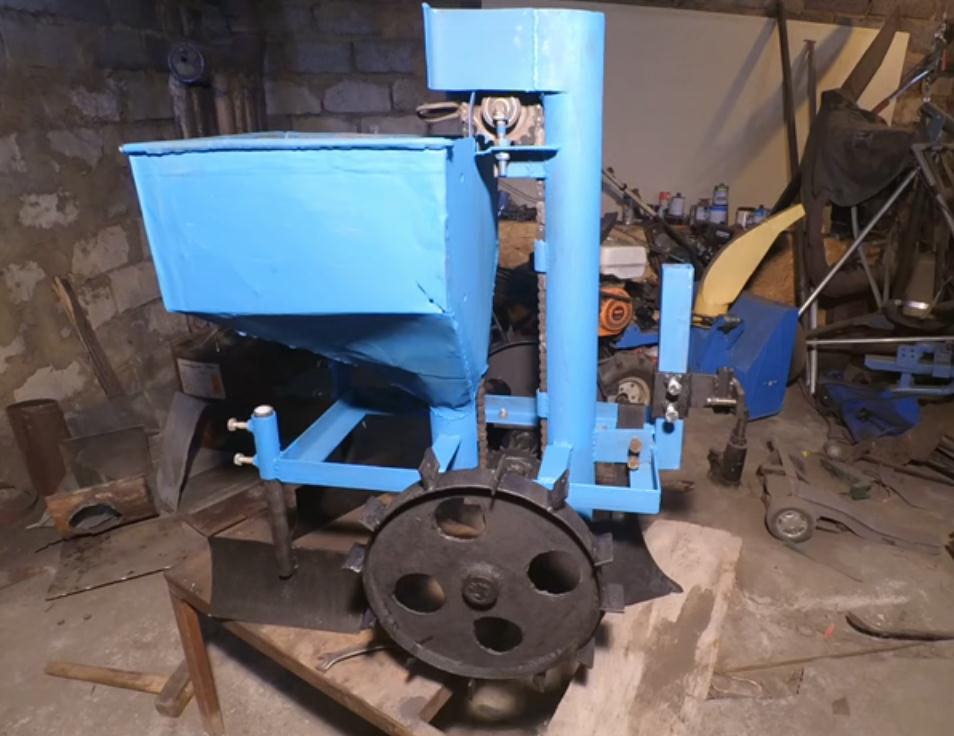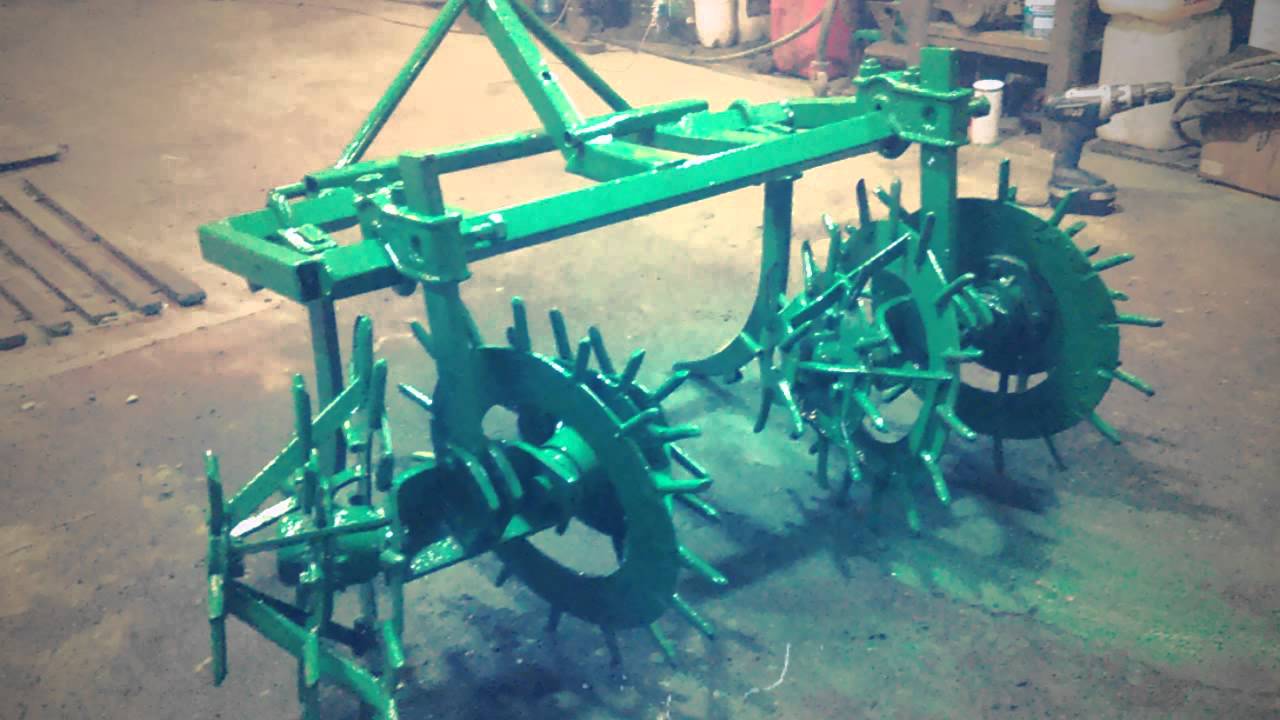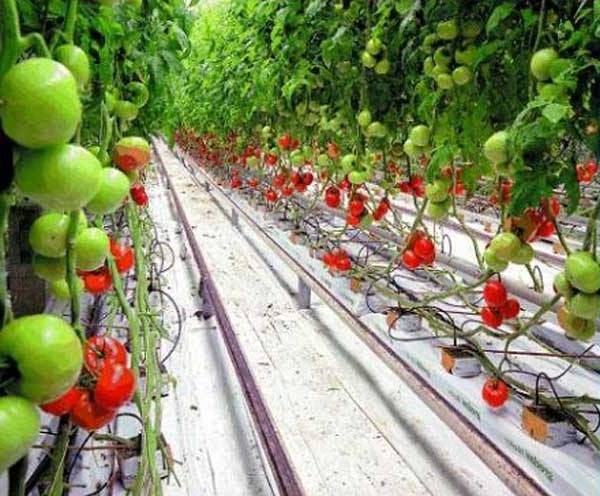Content:
In summer, fruit trees suffer from an influx of various pests that destroy the trunk, leaves, fruits. The loss of the crop and the damaged plant will upset any gardener, so everyone is trying to stop the parasites even before they have time to rise to the fruit and cause irreparable harm. A hunting belt is one of the tools that helps to cope with this problem without great expense.
What is a trapping belt
The hunting belt is a strip that encircles the trunk of a tree and prevents insects from getting to the crown. If you make such a belt correctly, then help from it will be better than from chemicals. It has shown its effectiveness in the fight against caterpillars, apple blossom beetles, whiteflies, ants, ticks, geese and bukarka. Gardeners make fishing belts on fruit trees with their own hands from improvised materials that are always in every home (burlap, glass wool, plastic wrap, plastic containers).
In total, there are 3 main types of trapping belts:
- Dry... For their manufacture, take a dense material (burlap, rubber, cardboard). Before setting the trap, it is required to cover up all cracks and depressions. This prevents pests from getting in, and not crawling under the belt. You can fill up irregularities with plasticine, clay. And after this stage, the trap itself is attached. A strip about 20-25 cm wide is wrapped around the trunk and fixed with a rope.
- Sticky... Adhesive or sticky belts are paper or cloth tapes impregnated with a special adhesive. It is thanks to him that insects are delayed and cannot travel along the trunk.
- Suicidal (poisonous). Despite the fact that poison is used in the manufacture of such a belt, it is harmless to the crop and humans. The amount of insecticide used in such a trap is detrimental to pests, but not dangerous to the plant, however, in order not to burn the bark, sometimes additional measures must be taken. The materials for the trap are taken almost the same as in dry ones, but they are additionally treated with a poisonous substance. This type of trapping belts is recognized as the most effective.
How to make a trapping belt for fruit trees with your own hands
Making trapping belts is not difficult. It is only worth taking care of the materials in advance, but since they are the simplest, it will not be difficult to find them. Each type of trap needs its own set of constituent elements.
Funnel
Funnels are the most famous types of dry belts. They have a special appearance and "pull" insects inside themselves. Such traps are made according to the following principle:
- A strip about 20-25 cm wide is cut out of a sheet of paper or cardboard and encircled the trunk of the plant. This must be done at a distance of 50 cm from the ground. As a result, the structure should take a conical shape (the top is tightly pressed against the tree, and the bottom is free).
- Such a sheet is fixed with a twine or a bundle (some use wire).
- The remaining passages and gaps on top can be repaired with clay.
Many people use the most common plastic bottles to create this type of trap:
- The neck of the bottle is cut off, and the cone itself is cut lengthwise.
- Frequent longitudinal cuts are made in the narrowed part. This is necessary so that the structure is more conveniently attached to the tree, and the cut does not injure the trunk.
- The trap is fixed to the plant also at a distance of 50 cm. A rope will do, and some use tape for this, so as not to leave the slightest gap.
Gate
In terms of prevalence, the gate defense trap is second. Many gardeners note the practicality of such a device and inconspicuousness. And if the funnels are intended for those bugs that rise from the bottom up to the crown and fruits, then the gate helps from parasites that descend to the ground for pupation or wintering. Stages of creation:
- A rubber strip is prepared (thickness 4-5 mm, width 20 cm).
- 50 cm is measured from the ground and a belt is attached at this level. In advance, he needs to bend the edges so that later a "collar" is obtained.
- The ends of the rubber strip must be tied together with glue.
- A little sunflower oil is poured into the resulting hole.
Getting into such a trap, insects cannot get out. However, they need to be removed in time before the sunflower oil is dry. It is also worth monitoring and adding oil as the oil decreases.
Double-sided funnel
The double-ended funnel is effective against bugs that go down to pupate and those that go up. Instructions on how to do it:
- A strip of at least 30 cm in width is cut from paper, fabric or other material.
- The strip is tightly attached to the trunk and tied in the center with a rope or bundle. So it remains free on both sides.
- To prevent pests from making their way, the remaining cavities at the point of contact with the trunk are sealed with clay.
Poisonous Trapping Belt
I make a poison trap in almost the same way as a double-sided funnel, only the material is additionally soaked in an insecticide solution. The effect of it lasts for at least 1-1.5 months. For the manufacture of such a design, paper, burlap, any coarse fabric are suitable. Step-by-step instruction:
- The material is cut 20-30 cm wide.
- Then it is impregnated with an insecticide.
- After preliminary preparation, the belt is attached to the trunk of the fruit tree so that it is 40-50 cm from the ground and the result is a "skirt" shape.
- Poisonous substances gradually evaporate, and to slow down this process, you can wrap the top of the strip in a film.
When falling into a poisonous trap, pests are looking for a way out for a long time, but do not find it and subsequently die from the fumes of the poison. The suicidal trapping belts have shown themselves best of all in the fight against caterpillars trying to get to the juicy fruits of an apple or pear.
Adhesive (sticky) trapping belt
This type of fishing belt is often used together with other varieties, but it is effective separately from others. Adhesive trapping belts are recognized by gardeners as the best remedy for ants, caterpillars and bugs. These insects are able to bypass dry or some poisonous traps. You can create sticky traps as follows:
- Kraft paper is prepared with a width of 20-25 cm.
- One side of it is lubricated with non-drying glue (available in special stores) or tar and resin are suitable.
- The adhesive side should remain outside and dry in contact with the barrel. The structure is attached at the top and bottom of the strip so that there is no gap left.
Tips and tricks for making and using trapping belts
- It is worth paying attention to the timing of the placement of the trapping belts. There are several peaks when insect infestations occur. First of all, this occurs in the spring, when the buds awaken. Then pests begin to make their raids, going from the ground to the crown of the tree. You need to take care of the trap before that. And another burst of activity occurs in autumn, when the pests are preparing for wintering and heading to the bottom of the trunk. Thus, you can select the type of construction and materials that will be most effective in the season.
- Inspections of traps should be frequent with timely removal of accumulated pests. If there are too many of them, then they can get out of the belt. It is impossible to hesitate with destruction.
- When cleaning traps, it is advisable to release insects useful for the garden, for example, ladybugs, ground beetles, and lacewings. Also, so that the hunting belt does not attract butterflies, bumblebees or bees, it should be of a dim dark color.
- Glass wool is an excellent material for a trapping belt if the main problem of the garden is caterpillar. Since their body is vulnerable, they cannot overcome such a barrier.
- Sometimes, in order not to make a sticky trap, they simply take sticky tape intended for flies. Since such tapes are caustic and saturated poison, it can harm the bark of the tree. Therefore, you should initially cover the trunk with a film, and then wrap it with tape 15-20 cm wide.
- Do not forget to remove the structures for the winter. They are burned together with pests after use.
Fishing belts are the safest and most environmentally friendly means in the fight against garden pests. They will help protect the garden from insect attacks and thus preserve the fruit crop without any significant effort.
